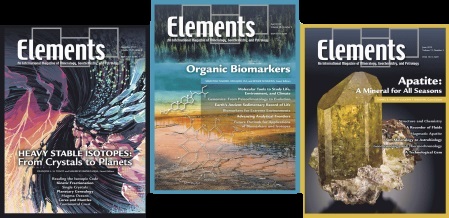Book Reviews
Book Review — PEGMATITES AND THEIR GEM MINERALS
By Elements | August, 2022
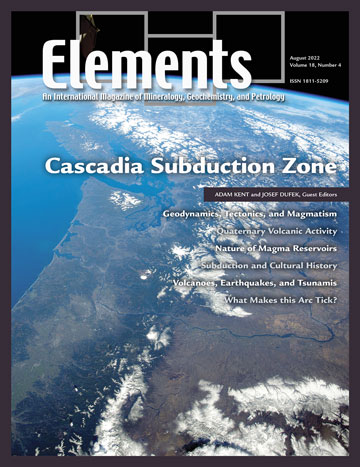
This new publication describes the special igneous rocks classified as pegmatites and the gem and other minerals recovered from them. Pegmatites often occur as dikes, sills, or pods in igneous and metamorphic rocks.
Book Review — AN INTRODUCTION TO METAMORPHIC PETROLOGY / 2nd EDITION
By Elements | June, 2021
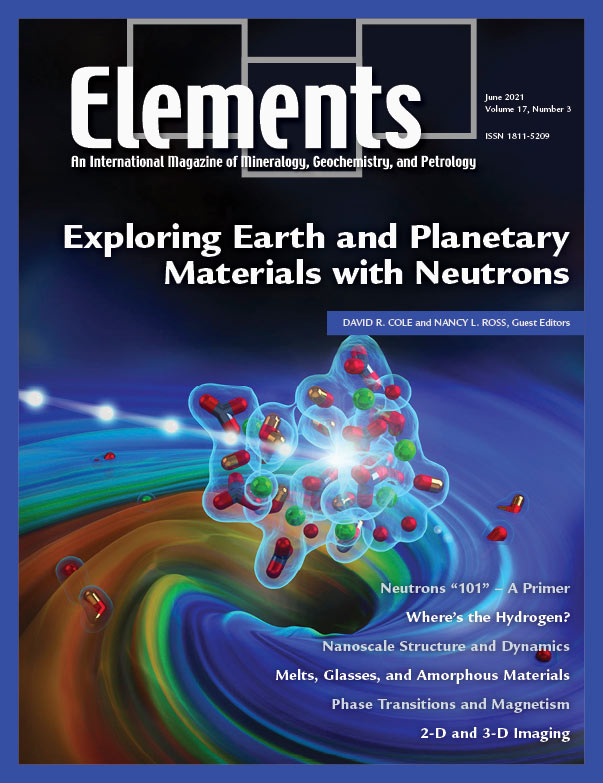
In 1989, Longman published a seminal book by Bruce Yardley entitled An Introduction to Metamorphic Petrology. Clearly written and well-illustrated, this was a much-needed textbook.
Book Review — BIOGEOCHEMICAL CYCLES: ECOLOGICAL DRIVERS AND ENVIRONMENTAL IMPACT
By Elements | December, 2020
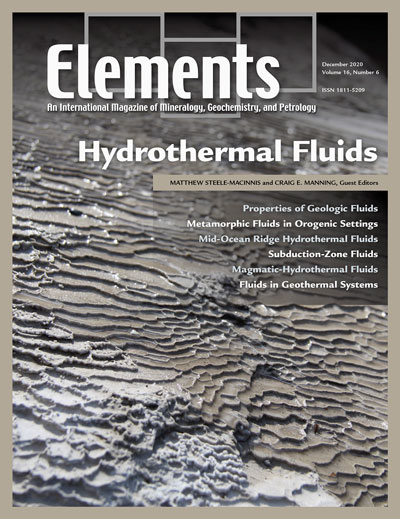
Volume 251 of the Geophysical Monograph series is dedicated to the role of living organisms in critical zone processes. It is co-edited by three researchers in environmental sciences: Katerina Dontsova (University of Arizona, USA), Zsuzsanna Balogh Brunstad (Hartwick College, New York, USA) and Gaël Le Roux (CNRS, University of Toulouse, France).
Book Review — THERMODYNAMICS IN EARTH AND PLANETARY SCIENCES
By Elements | June, 2020
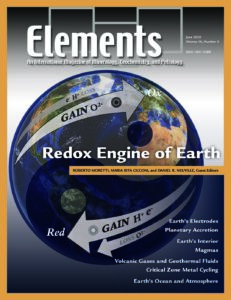
Thermodynamics is a vast subject with a long and complex history. It is now about two hundred years since the general acceptance of the ideal gas equation of state (PV = nRT) (e.g., Biot 1816) and the discovery of limiting behaviour in the high temperature heat capacity of elemental solids (Petit and Dulong 1819).
Book Review — MONT SAINT-HILAIRE: HISTORY, GEOLOGY, MINERALOGY
By Elements | April, 2020
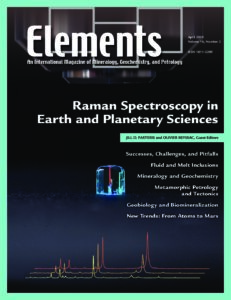
About 40 km east of Montreal in Quebec (Canada), the modest hill named Mont Saint-Hilaire (MSH) reaches only 415 meters. But the quarry on its northeastern flank is one of the world’s richest mineral localities, having yielded up 434 species and 66 type minerals.
Book Review — CLAYS IN THE CRITICAL ZONE
By Elements | August, 2019
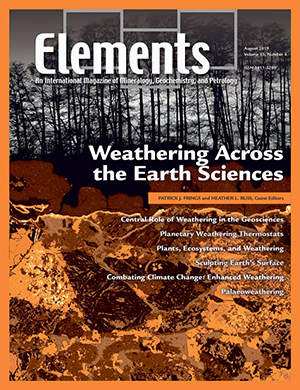
The central importance of clays and clay minerals to our understanding of very many of the processes in, and functions of, the recently conceptualised “critical zone” is indisputable. The 2018 book Clays in the Critical Zone by Paul Schroeder is a timely contribution that, if you are not already swayed, will convince you of this fact.
Book Review — THE ROLE OF HALOGENS IN TERRESTRIAL AND EXTRATERRESTRIAL GEOCHEMICAL PROCESSES: SURFACE, CRUST, AND MANTLE
By Elements | August, 2018
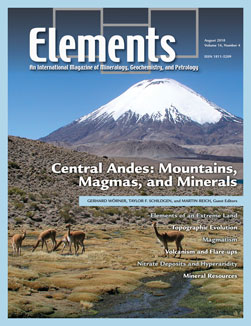
The halogens—F, Cl, Br, I—are an incredibly reactive group of elements named for their ability to form a salt (hal) and to produce (gen) ionic compounds with metals (e.g. Na) by accepting outer-shell electrons from the metal to fill the outer shell of the halogen atom.
Book Review — riMg 82: Non–Traditional Stable Isotopes
By Elements | June, 2017
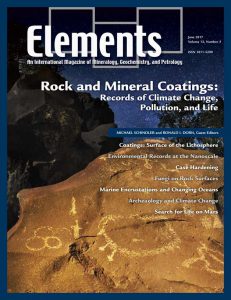
Thirteen years ago, in 2004, the book Geochemistry of Non-Traditional Isotopes [Volume 55 of the Reviews in Mineralogy and Geochemistry (RiMG) series] was published. Since then, tremendous advances in multi collector inductively coupled plasma (ICP) mass spectrometry has made the precise measurement of additional isotope systems possible.
Book Review — MARINE GEOCHEMISTRY
By Elements | April, 2017
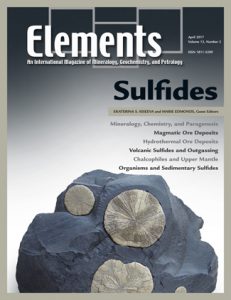
Climate change, ocean acidification, coral bleaching, marine “dead zones”… for better or worse, the Anthropocene is certainly proving to be an interesting time for marine science, and particularly for marine geochemistry.
Book Review — GEOCHEMICAL MODELLING OF IGNEOUS PROCESSES – PRINCIPLES AND RECIPES IN R LANGUAGE
By Elements | June, 2016
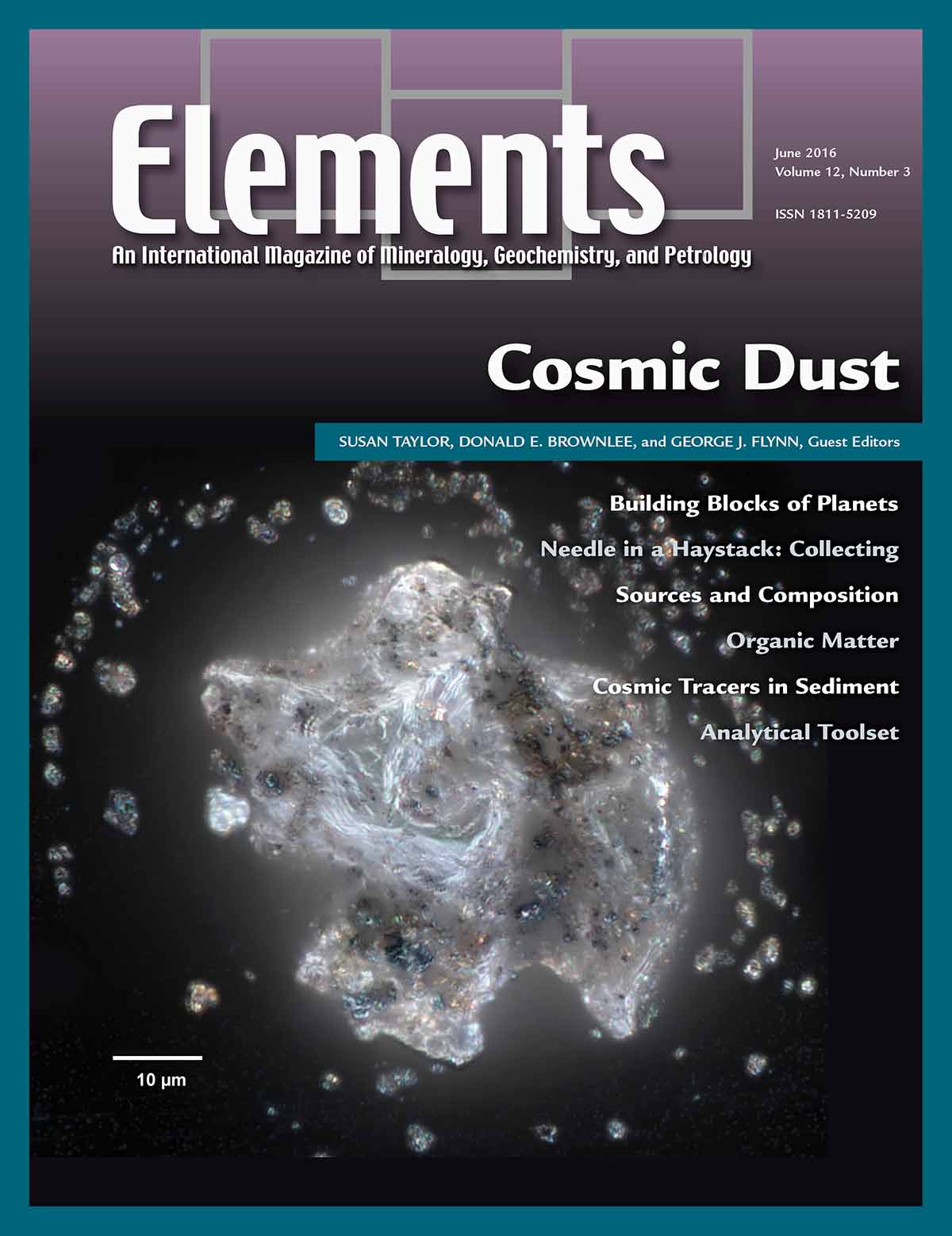
Over the past few decades, igneous petrology has gained great power because geochemical modeling can now be used to test geological hypotheses. Technological advances have led to an exponential increase in high-quality geochemical data for igneous rocks and minerals, which is being used to decipher processes in the Earth’s crust and upper mantle. Particularly powerful have been the use of trace elements and radiogenic isotopes.
Book Review — GLOBAL VOLCANIC HAZARDS AND RISK
By Elements | February, 2016
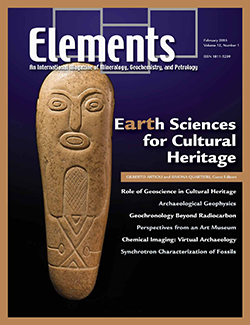
Major environmental challenges affecting human communities require geoscientists who are not only scientifically and technically trained but who recognize their broader commitment to society. With 800 million people at risk from volcanic activity around the world, and populations ever increasing, volcanologists are embracing a more integrative applied approach, which is necessary to understand the human dimensions of volcanic activity.
Book Review — ATLAS OF METEORITES
By Elements |December, 2015
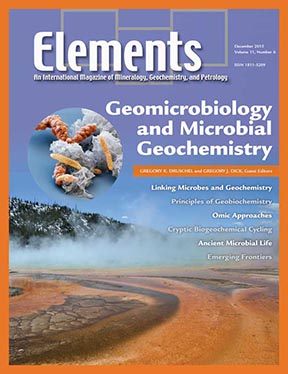
The Atlas of Meteorites, by M. Grady, G. Pratesi, and V. Moggi Cecchi, is a beautifully illustrated volume that encompasses the detailed mineralogy, petrology, and geochemistry of all of the major meteorite groups currently known. Recognizing the importance of textural information—as revealed by optical microscopy—the authors’ stated aim was to provide a textbook akin to An Atlas of Rock-Forming Minerals in Thin Section by W. S. MacKenzie and C. Guilford (1980; Longmans), in the hopes that it will do for meteorites what MacKenzie and Guilford did for understanding the petrology of rocks from Earth.
Book Review — ARSENIC ENVIRONMENTAL GEOCHEMISTRY, MINERALOGY, AND MICROBIOLOGY
By Elements | October, 2015
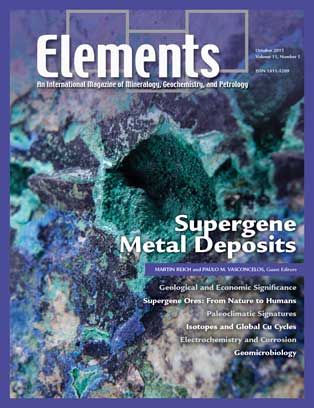
Arsenic is an element with a fascinating and, in many ways, frightening history. Long before its isolation as an element in 1250, it was known (probably in the form of the naturally occurring oxide) to ancient civilisations, such as the Romans, for its poisonous properties. Indeed, it was almost certainly a favourite ‘weapon’ of assassins in those distant times. Interest in arsenic in the modern era still centres on its poisonous character, but now it is the inadvertent release of arsenic into sediments, soils and waters that is the focus.
Book Review — INTRODUCTION TO CARBON CAPTURE AND SEQUESTRATION
By Elements | August, 2015
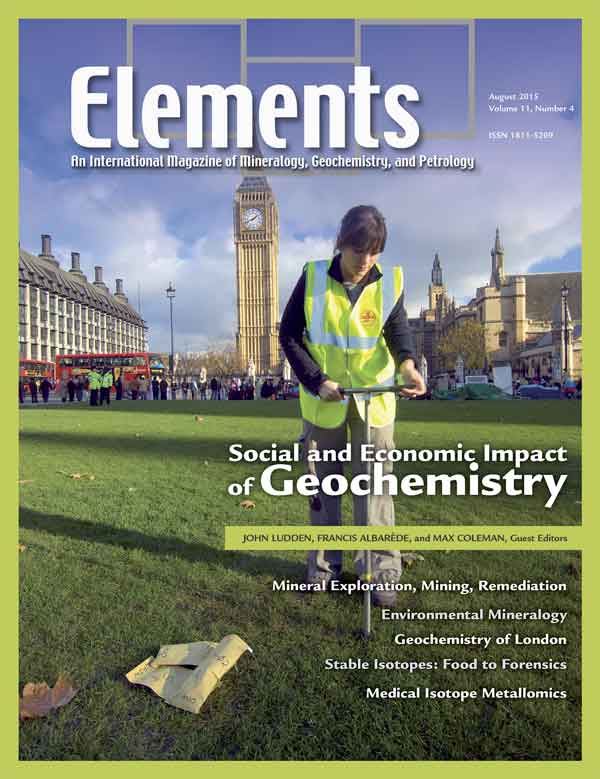
Introduction to Carbon Capture and Sequestration is the first volume of the Berkeley Lectures on Energy series and is published by Imperial College Press. The book has a very appealing visual format, one that captures the attention of the reader without creating unnecessary distraction. The US-based authors, Berend Smit, Jeffrey A. Reimer, Curtis M. Oldenburg and Ian C. Bourg, are well-known researchers of carbon capture and sequestration (CCS).
Book Review — LARGE IGNEOUS PROVINCES
By Elements | June, 2015

The term “large igneous province” (LIP) was first introduced in 1992 to describe unusually large, short-duration volcanic episodes that are relatively rare throughout Earth’s history and that are not easily explained by plate tectonics. The use of LIP has become widely accepted; however, there has been considerable debate as to what exactly a LIP is and how one originates. In his book Large Igneous Provinces, Richard E. Ernst has done an excel lent job in reviewing these fascinating features and the controversies surrounding them, as well as providing an assessment of our current state of knowledge.
Book Review — MINERALOGY AND OPTICAL MINERALOGY – iBOOK EDITION
By Elements | April, 2015
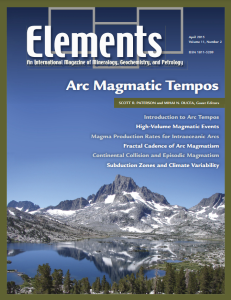
Mineralogy and Optical Mineralogy, by D. Dyar, M. Gunter, and T. Tasa, covers in detail all aspects of modern mineralogy. However, the book takes a new and innovative approach to the subject. The idea behind the book is that, although being fundamental to the geosciences, mineralogy is usually regarded by students (including the authors, as they frankly admit) as being difficult due to a wrong didactic approach.
Book Review — CRITICAL METALS HANDBOOK
By Elements | December, 2014
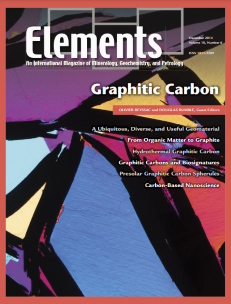
Recent years have seen growing concern for the potential imbalance between the supply and demand of metals that are vital to the production of high-tech materials, components and devices. These products are generally taken for granted by lay people in our technological society, with little regard for the origins of the raw materials used to make them or the potential issues that could arise were their supply to be disrupted. Many of the rare metals that are critical to these applications are derived only as by-products of base metal production. Changes in the way that base metals are produced, both now and in the future, can and will have a profound effect on the availability of those by-products.
Book Review — A HISTORY OF GEOLOGY AND MEDICINE
By Elements | October, 2014
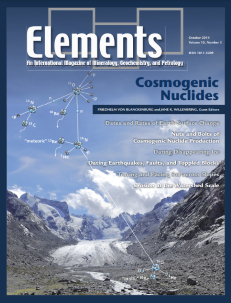
While checking for the availability of this book on Amazon, I noted a solo review of it by Robert B. Finkelman; he simply stated, “Interesting book,” and gave it 5 stars, which is the highest rating possible.
Book Review — OCEANS AND HUMAN HEALTH: IMPLICATIONS FOR SOCIETY AND WELL-BEING
By Elements | August, 2014
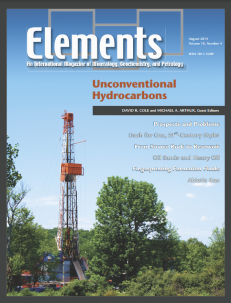
This eclectic book, edited by Robert E. Bowen, Michael H. Depledge, Cinnamon P. Carlane, and Lora E. Fleming, contains 11 chapters written by international groups of authors, mostly from the US and UK. Several chapters draw heavily on the Millenium Ecosystem Assessment, a United Nations–initiated review of the consequences of ecosystem change for human well-being. The chapters are abundantly referenced and an index is provided.
Book Review — DEVELOPING A TALENT FOR SCIENCE
By Elements | June, 2014
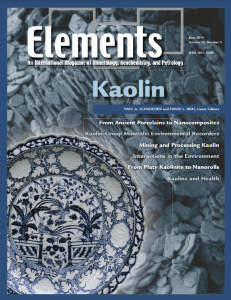
In the last couple of years, several “how to” books pertaining to a successful career in science have landed on my desk. I set out to read some of them to evaluate if they might be useful to my daughter-in-law who is contemplating graduate studies in biology.
Book Review — METASOMATISM AND THE CHEMICAL TRANSFORMATION OF ROCK
By Elements | April, 2014
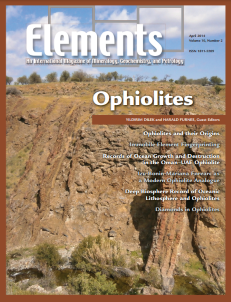
The concept of metasomatism, or the chemical alteration of solid rocks, stems from the classical observations and interpretations of pioneering geochemists and petrologists, starting with V. M. Goldschmidt and including Hans Ramberg, Peter Misch, and D. S. Korzhinsky.
Book Review — MINERALS AT THE NANOSCALE
By Elements | December, 2013
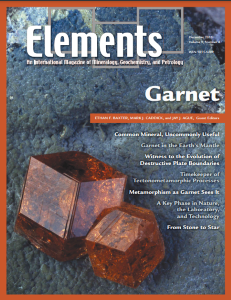
Minerals at the Nanoscale is the European Mineralogical Union’s most recently released volume in its series EMU Notes in Mineralogy. The overall series has been exceptionally well done since the first volume in 1997, and this latest volume (#14, published in 2013) follows in that tradition. To be honest, the only aspect of the entire book that I found less than ideal was the title.
Book Review — URANIUM – CRADLE TO GRAVE
By Elements | October, 2013
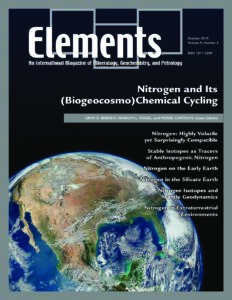
The past two decades have seen remarkable advances in uranium chemistry. Much of this progress derives from environmental research, including radioactive-waste disposal and remediation of contaminated sites. To a large extent, technology has propelled this knowledge growth, including the exponential growth in computing power.
Book Review — APPLIED MINERALOGY OF CEMENT AND CONCRETE
By Elements | August 2013
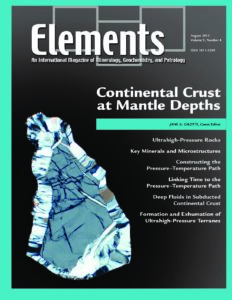
Cements and concretes are among the most widely used materials, and they have had a significant impact on modern human activities and the environment. Ordinary Portland cement is the essential binder in modern concrete, and together with other cement types, it represents a fundamental and cheap commodity for the development of society’s infrastructure around the world. Concrete is second only to water in terms of the total volume of raw material consumed annually.
Book Review — RAMAN SPECTROSCOPY APPLIED TO EARTH SCIENCES AND CULTURAL HERITAGE
By Elements | June, 2013
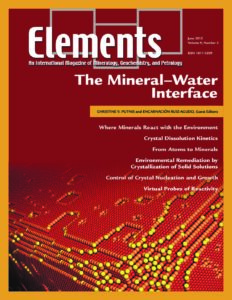
Raman spectroscopy is a highly flexible tool that can be applied to the analysis of fluids and solids, including minerals and glasses. In recent years the application of Raman spectroscopy in Earth science and cultural heritage studies has seen enormous growth. Early on, Raman was mostly a qualitative to semiquantitative technique used to test for the presence or absence of particular molecular species, and the large majority of early studies in the Earth sciences were related to the analysis of fluid inclusions using the MOLE Raman microprobe. Today, Raman is a quantitative tool that not only identifies which species are present but also the amounts.
Book Review — HANDBOOK OF ENVIRONMENTAL ISOTOPE GEOCHEMISTRY
By Elements |April, 2013
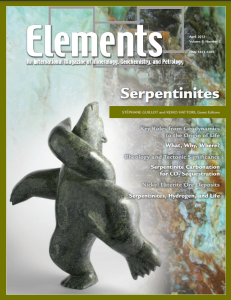
The coverage of the volumes is so broad that it is very difficult to describe in a review of reasonable length. However, the contents are almost as notable for what they do not cover as for what they do.
Book Review — QUANTITATIVE MINERALOGY AND MICROANALYSIS OF SEDIMENTS AND SEDIMENTARY ROCKS
By Elements | February, 2013
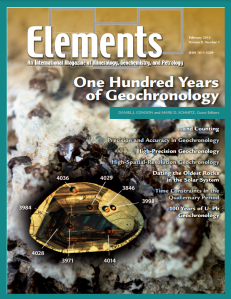
Mineral liberation analysis (MLA), combined FIB-SEM-TEM techniques, synchrotron and light stable isotope microanalysis, hot and cold cathodoluminescence, X-ray-computed tomography, reflectance and imaging spectroscopy, high-resolution heavy-mineral analysis, computer-controlled scanning electron microscopy (CCSEM), U–Pb and fission-track geochronology of zircon and apatite, Hf and Pb iso tope geochemistry of zircon and feldspar—this is the impressive menu of the novel, exciting techniques currently applied in the study of sedimentary deposits and illustrated in full detail in the relatively slim volume Quantitative Mineralogy and Microanalysis of Sediments and Sedimentary Rocks.
Book Review — ROCK-FORMING MINERALS VOL. 5A – NON-SILICATES: OXIDES, HYDROXIDES AND SULPHIDES
By Elements | December, 2012
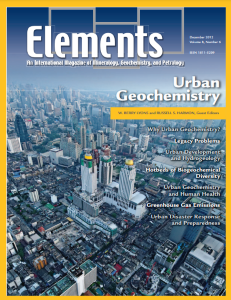
Few books on our shelves are pulled more often than mineralogy reference texts. It was thus a great pleasure to dive into a new edition from the classic series Rock-Forming Minerals (aka Deer, Howie and Zussman). This particular release, Non-Silicates: Oxides, Hydroxides and Sulphides (volume 5A), is a vastly grown-up second edition of its predecessor of 50 years prior. Authors Bowles, Howie, Vaughan, and Zussman have compiled a comprehensive look at a subset of the mineral classes covered in the original, with the up-to-date version expanded to an impressive 920 pages in length.
Book Review — LAYERED MINERAL STRUCTURES AND THEIR APPLICATION IN ADVANCED TECHNOLOGIES
By Elements | October, 2012
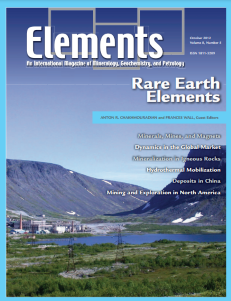
The current information about the existence of clay minerals on extra terrestrial bodies leads many to conclude that layered mineral structures facilitated the advent of self-replicating organic compounds on Earth (i.e. life as we know it, here or elsewhere).
Book Review — GRANITES AND GRANITES
By Elements | August, 2012
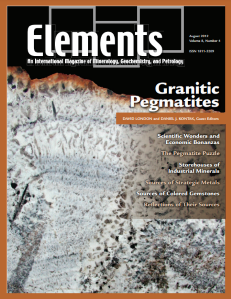
The papers are grouped into four sections: the origins of granitic magmas; fi eld relations, magma transport and emplacement; typology and magmatic evolution; melt compositions, experimental petrology and economic potential.
Book Review — Nature’s NaNostructures
By Elements | June, 2012
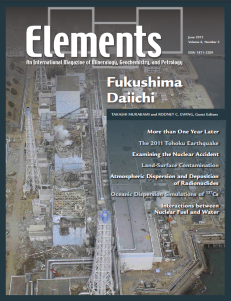
The Earth system, comprising geologic, hydro logic, biologic, atmospheric, and anthropic subsystems, cannot be studied effectively without crossing many traditional disciplinary boundaries. Nature’s Nanostructures is a strategically named volume, edited by Amanda S. Barnard and Haibo Guo, that exemplifies not only the ease with which boundaries can be crossed but also the necessity of doing so.
Book Review — FRONTIERS IN GEOFLUIDS
By Elements | April, 2012
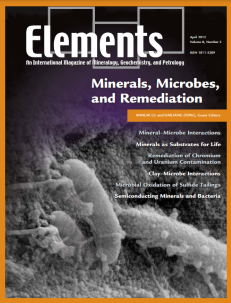
FRONTIERS IN GEOFLUID Frontiers in Geofluids is actually a collection of invited papers published in 2010 to mark the tenth anniversary of the launch of the journal Geofluids. It is composed of 19 research and review articles varying in length from 7 to 32 pages and written by 39 different authors, many of whom are leading authorities in the study of geological fluids.
Book Review — SULFUR IN MAGMAS AND MELTS: ITS IMPORTANCE FOR NATURAL AND TECHNICAL PROCESSES
By Elements | February, 2012

Published by the Mineralogical Society of America and the Geochemical Society, volume 73 of the Reviews in Mineralogy & Geochemistry series, Sulfur in Magmas and Melts: Its Importance for Natural and Technical Processes, is an excellent reference volume and will be, for many people and for many years to come, the starting point for understanding the role of sulfur in melts.
Book Review — AdvAnces in the chArActerizAtion of industriAl MinerAls
By Elements | December, 2011
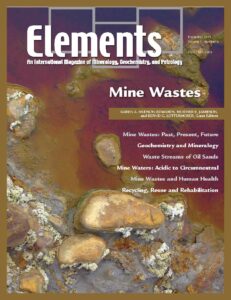
Industrial minerals are geological materials mined for their commercial value. The term does not include gemstones or materials used as fuels or as sources of metals.
Book Review — ION PARTITIONING IN AMBIENT TEMPERATURE AQUEOUS SYSTEMS
By Elements | October, 2011
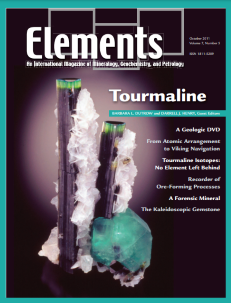
Water–rock interactions are at the heart of many of the processes that make the Earth (so far) a habitable planet2. Understanding and quantifying these processes help us to study, control and potentially remediate some of the anthropogenic interferences and disturbances affecting the delicate balance that makes life on Earth so unique. Natural and man-made systems are seldom simple, and this also applies to the interactions between complex solid solutions and multicomponent aqueous systems.
Book Review — TIMESCALES OF MAGMATIC PROCESSES FROM CORE TO ATMOSPHERE
By Elements | August, 2011
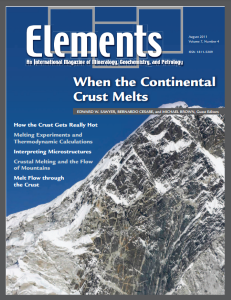
To say that this book is very timely would appear to be a cheap pun. But actually, timescales have been one of the most important focuses of research in the last 10 to 20 years for those working on magmatic rocks, as a brief survey of the AGU Volcanology, Geochemistry, Petrology (VGP) section sessions will confirm.
Book Review — GEOCHEMISTRY OF EUROPEAN BOTTLED WATER
By Elements | June, 2011
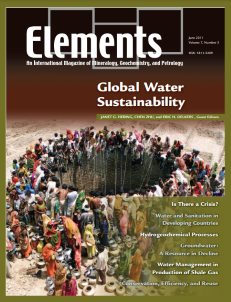
Geochemistry of European Bottled Water is based on the analytical data from 1785 samples of bottled water bought in European supermarkets in 2008. The samples represent 1189 different brands from 1247 wells at 884 locations. The samples were acquired as a result of a unique effort by the editors, Clemens Reimann and Manfred Birke, and a large number of colleagues from 38 countries in Europe. The declared purpose of the effort was to inform the public about the wide range of solute concentrations and the variability of other parameters pertaining to commercially available bottled water.
Book Review — IGNEOUS ROCKS AND PROCESSES: A PRACTICAL GUIDE
By Elements | April, 2011
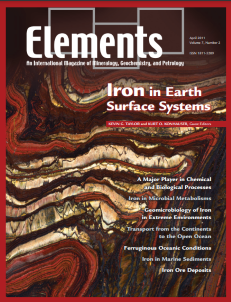
Igneous Rocks and Processes is a large (22 × 28 cm), weighty (1.5 kg), and thorough (428 pages) text/treatise on igneous petrology. The book is divided into nine chapters and ancillary material. The aim of the book “is to help students to develop appropriate descriptive and interpretative techniques … [with] a different order of priorities to those that one would embrace in writing a book on petrogenesis” (p. vii). In this reviewer’s opinion, Igneous Rocks and Processes contains more than enough material to cover both aims at the intermediate level sought by the author, Robin Gill.
Book Review — INTRODUCTION TO MEDICAL GEOLOGY
By Elements | February, 2011
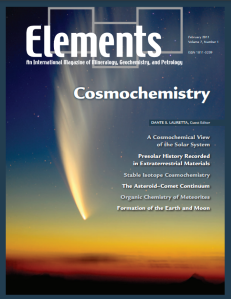
The authors of Introduction to Medical Geology are to be commended for having undertaken the complex task of joining the geological and geochemical aspects of our planet with the geographical settings of people in the tropics. The subject is particularly pertinent to those who suffer inadvertently from the natural and often “silent” hazards of their environment.
Book Review — COSMOCHEMISTRY
By Elements |October, 2010
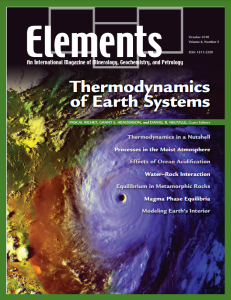
Cosmochemistry is an exciting, new and rapidly growing interdisciplinary fi eld. A student of cosmochemistry is expected to have some knowledge of chemistry, physics, astronomy, mineralogy and geology. A scholarly presentation of all these aspects in a single publication has been lacking for many years.
Book Review — Metasomatism in Oceanic and Continental Lithospheric Mantle
By Elements | August, 2010
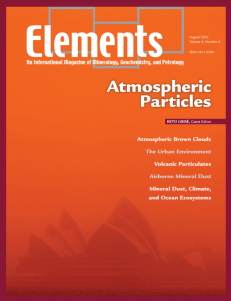
The generation of magmas and fluids at various depths in the Earth, their role in shaping the interior/exterior of our planet, and their unmistakable record in mantle specimens are topics that have come of age. Investigations of mantle melting have evolved from simple documentation of compositions of terrestrial materials to field and laboratory experiments for determining the controls on such melting processes. Natural specimens have allowed us to quantify melting processes in the mantle, and we have made unprecedented progress in understanding mantle metasomatism.
Book Review — SECONDARY ION MASS SPECTROMETRY IN THE EARTH SCIENCES
By Elements | April, 2010
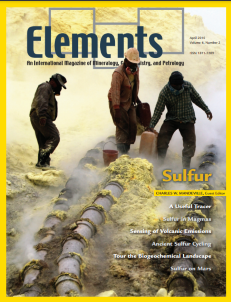
A variety of applications of secondary ion mass spectrometry (SIMS) to geological investigations are presented, in a mix of introductory and advanced discussions. While SIMS instruments have been employed since the 1950s in the semiconductor industry, the application to map ping chemical compositions of solid surfaces was pioneered by Raimond Castaing and George Slodzian (Paris, France) in the 1960s. Applications to Earth sciences have developed since the 1970s, and this volume presents a few of the methods most recently developed using modern instruments.
Book Review — THERMODYNAMICS AND KINETICS OF WATER-ROCK INTERACTION
By Elements | February, 2010
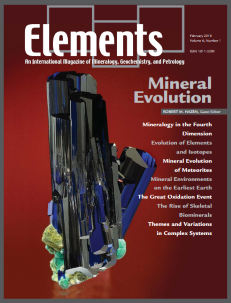
Water–rock interactions cannot be understood or quantitatively interpreted without the application of physical chemistry consisting of thermodynamics, kinetics, and quantum mechanics. In the period 1965–1985, applied geological thermodynamics reached a pinnacle of importance, with kinetics closely following. It would have been unthinkable then to graduate master’s and doctoral students in mineralogy, geochemistry, petrology, or any chemically related (or meteorologically related) aspects of environmental science without a course in thermodynamics.
Book Review — THE CAMBRIDGE HANDBOOK OF EARTH SCIENCE DATA
By Elements | December, 2009
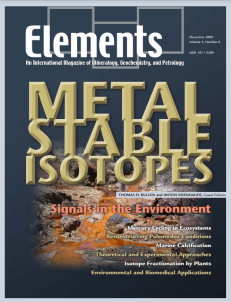
What makes NVM different from many other reviews is that for many controversial topics there are two Looking for neat information to spice up your lectures? Writing or reviewing a paper and wanting to check some facts quickly? This convenient, almost-pocket-size book (easy to carry in your laptop case) is for you. For an editor, it is a godsend, and in fact I put it to good use shortly after I received a review copy (e.g. concentration of gold in continental crust; the abundance and mass of naturally occurring nuclides). In their preface, the authors, Paul Henderson (University College London) and Gideon Henderson (Oxford University) state, “We very much hope that users of this book will find their need for a one-stop and straight forward data source satisfied – a need we felt and which prompted us to produce the book.” or more treatments.
Book Review — WorkInG WIth MIGMatItes
By Elements | October, 2009
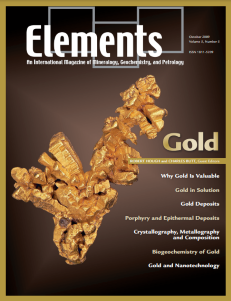
The Mineralogical Association of Canada is well known for the short course volumes it has published over the past forty years on various geological topics. One of the most recent volumes, Working with Migmatites, edited by Edward W. Sawyer and Michael Brown, appeared shortly after the release of Atlas of Migmatites, by E. W. Sawyer, a special publication by the same association that beautifully illustrates migmatites from the outcrop to the grain scale. The nearly synchronous publication of these two volumes is not accidental, but simply demonstrates that it was an opportune moment to summarize current knowledge after a period of sustained and fruitful research on crustal melting. Numerous studies have improved our knowledge of melting reactions, melt segregation and transfer, and the role of partially melted rocks in the evolution of orogens.
Book Review — GEOCHEMICAL KINETICS
By Elements | August, 2009

In the chemistry world, many good textbooks cover the fields of chemical kinetics and diffusion. These include numerous modern texts, as well as various older classics and their updated versions, such as Laidler’s Chemical Kinetics. But in the geochemical world, the choice is rather sparser: Lasaga’s well-known text, Kinetic Theory in the Earth Sciences, published a decade ago by Princeton University Press, and now Geochemical Kinetics by Youxue Zhang, published in 2008, also by Princeton University Press, and the subject of this review.
Book Review — LASER ABLATION ICP–MS IN THE EARTH SCIENCES: CURRENTENT PRACTICES AND OUTSTANDING ISSUES
By Elements | June, 2009
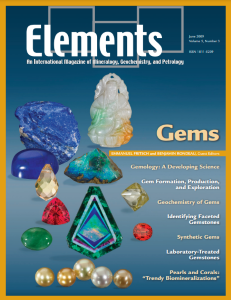
Laser ablation ICP–MS has been an important analytical tool in the Earth sciences since the early 1990s. Eight years ago, a workshop was held in St. John’s, Newfoundland, Canada, on the topic. As a result of the workshop, a col lection of papers describing the technique and its application to trace element analysis, along with a brief consideration of isotope ratio measurements, was published (LA–ICP–MS in the Earth Sciences: Principles and Applications, Mineralogical Association of Canada short course volume 29).
Book Review — AtlAs of MigMAtites
By Elements | April, 2009
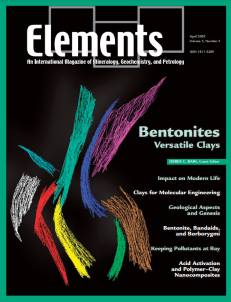
Each year, many studies of migmatites (most simply defined as rocks that show evidence of partial melting) from all around the world are published. The eager audiences include meta morphic and igneous petrologists, geochemists, and a sizable “migmatite fan base” of structural geologists. However, aside from edited collections of papers, there has been no over arching review of migmatites and the processes that create them since Karl-Richard Mehnert’s book Migmatites and the Origin of Granitic Rocks, published in 1968.
Book Review — Oxygen in the Solar System
By Elements | February, 2009
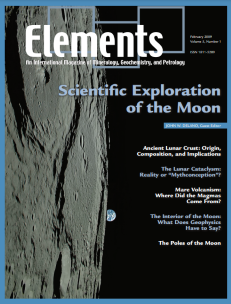
This new volume of Reviews in Mineralogy & Geochemistry provides a comprehensive review of elemental and oxygen isotope com ponents of the solar system at large. Aside from a well-defined unifying theme, what I find unusually useful is the depth of the combined observations, measurements, and theory. This combination makes the text valuable for those wishing to get up to speed in an alien subject area. The book follows oxygen across the solar system in various objects, including planets, asteroids, and the Moon, and from their origins to the present time. In chapter 5, Jensen et al. venture beyond the solar system and review oxygen in the interstellar medium.
Book Review — Fluid–Fluid interactions
By Elements | December, 2008
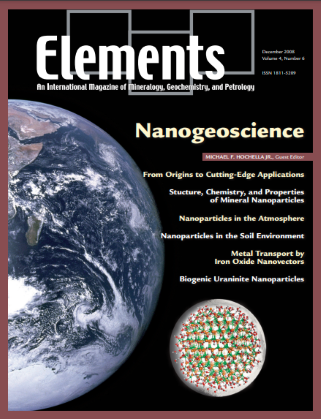
The different regions of the mantle and crust give rise to a wide range of fluid compositions, which, according to temperature, pressure and composition, can show complete miscibility to complete immiscibility. Partial miscibility of fluids in the crust and the changes in miscibility as conditions change have a range of consequences, which are explored in this volume.
Book Review — Pegmatites
By Elements | October, 2008
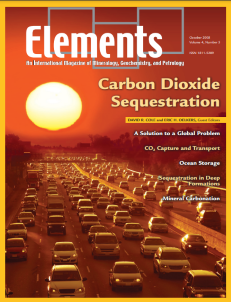
Pegmatites are remarkable rocks, and this is a remarkable book. Almost everything one could wish to know about pegmatites, their characteristics and their origin is contained in its pages. Thus, it provides readers from a very wide range of backgrounds and interests with an entry level, a catch-up, or a state-of-the-art review about these fascinating rocks. It would also look good on a coffee table, with its large format and beautiful photographic illustrations.
Book Review — NeutronScatteringinEarthSciences
By Elements | August, 2008

The availability of specialised structural and analytical techniques at central facilities (e.g. synchrotron and neutron laboratories) has revolutionised materials (sensu lato) research over the last10–20years, but Earth scientists as a whole have been slow to ‘dip their toes’ into such exciting waters. However, the synchrotron radiation, element specific X-ray absorption spectroscopic technique (EXAFS) is becoming increasingly popular among environmental scientists studying the cycling of toxic elements.
Book Review — AMPHIBOLES: Crystal Chemistry, Occurrence, and Health Issues
By Elements | June, 2008
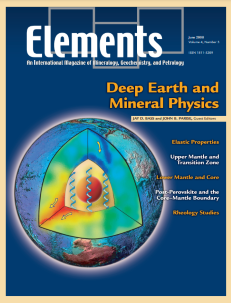
As noted in the preface, volume 9 of the Reviews in Mineralogy series, Amphiboles and Other Hydrous Pyriboles, published 25 years ago, seemed to contain all that was possible to know about this group of fascinating minerals. As this new RIMG volume (67) shows, that assessment was clearly wrong. The present volume incorporates advances in knowledge resulting from new instrumental techniques, the investigation of hitherto neglected rock types, and the development of new ideas.
Book Review — MINERALOGY AND OPTICAL MINERALOGY
By Elements | April, 2008
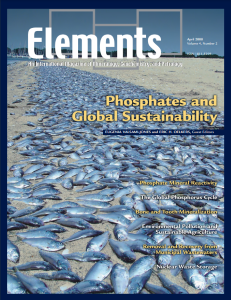
I believe that mineralogy is the core discipline of the geosciences; that it is the subject which underpins our understanding of the Earth in the way that molecular biology underpins our under standing of the life sciences. This has yet to be appreciated by many of our colleagues in other disciplines and by many of the young people starting their studies in colleges and universities around the world. Convincing our colleagues of the importance of mineralogy and the cognate sub jects of petrology and geochemistry is one of the challenges being addressed by Elements, but attracting the interest of new generations of students is the job of teachers and those who produce textbooks and course materials. This was the challenge facing the authors of Mineralogy and Optical Mineralogy and one to which they have responded admirably.
Book Review — INTRODUCTION TO PLANETARY SCIENCE: THE GEOLOGICAL PERSPECTIVE
By Elements | February, 2007
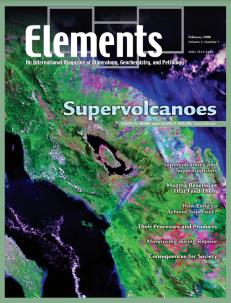
Astronomy is rightfully abdicating much of the solar system to geology, as we learn more and more about the geological workings of planets and small bodies. This shift of a substantial quantity of scientific real estate is reflected in the appearance of planetary geo science courses at many colleges and universities. The preface of this new text book indicates that it is intended for use in capstone courses taken by senior undergraduate Earth science majors and possibly beginning graduate students. Until now, there has been no appropriate text available.
Book Review — GEOLOGY OF GEM DEPOSITS
By Elements | October, 2007
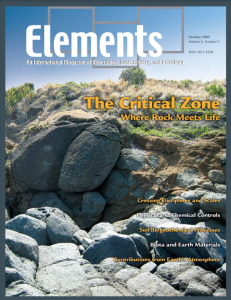
Everybody knows what gems are, but very few can tell how they form. There are several reasons for this, some concisely explained by Lee Groat in the preface of this book. In particular, large mining companies have recently started to pay attention to gemstones. However, unlike other minerals or ores, there are no well-established prospecting guidelines or strategies for gems (except diamond). This book is a significant contribution towards that aim. It presents a much needed overview of rapidly evolving research in the field, particularly on corundum and emerald.
Book Review — EARLY EARTH SYSTEMS–AGEOCHEMICAL APPROACH
By Elements | August, 2007
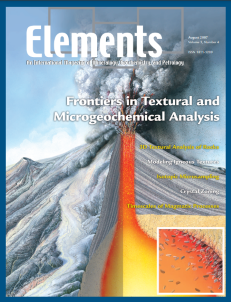
At the world’s start, according to the medieval Norse, there was “no sea nor land, nor salty waves, neither earth was there, or upper heaven, but a gaping nothing, and green things nowhere.” Origin myths commonly echo the ideas of void or darkness, heat or cold, water and rock, at Earth’s inception. It is an ancient art for people to fill the “gaping nothing” in our knowledge of the beginning of it all. For Earth’s first two billion years, this quest is especially enticing.
Book Review — NEW VIEWS OF THE MOON
By Elements | June, 2007
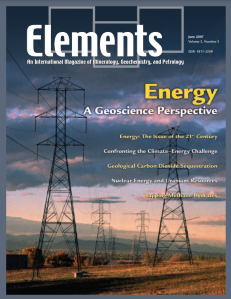
What makes NVM different from many other reviews is that for many controversial topics there are two or more treatments. For example, lunar mantle composition is addressed separately in terms of seismology, melting models, and geochemistry. There is much repetition in these treatments, but not a lot of agreement. Ideally, one expects a streamlined, consensus judgment in a review, but such an endeavor inevitably eliminates much of the nuance that underlies opposing views. NVM retains nuance and promotes insight.
Book Review — Melt Inclusions in Plutonic Rocks
By Elements | April, 2007
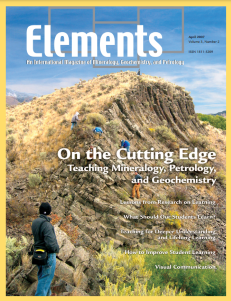
The Mineralogical Association of Canada Short Course Series volume 36, Melt Inclusions in Plutonic Rocks, presents a historical perspective and details the current state of knowledge and potential future developments for this useful petrologic tool. The editor, James D. Webster, has brought together a very well-balanced, well-illustrated group of papers that will be useful to the student as well as the dedicated inclusion worker. This volume shows that the study, interpretation, and use of melt inclusions to understand intrusive rocks has come of age.
Book Review — Uncertainty Underground
By Elements | December, 2006
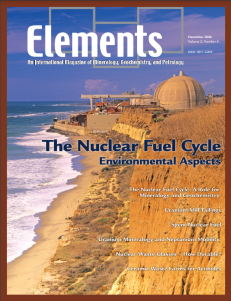
Two decades ago the United States Congress determined that only Yucca Mountain, Nevada, should be further evaluated as a potential site for a geologic repository for high-level nuclear waste. If there is eventually a repository in Yucca Mountain, it will likely be the only repository located in the unsaturated zone, above the groundwater table, where the waste will reside in oxidizing conditions. Spent nuclear fuel is the primary waste form awaiting disposal in Yucca Mountain, and it is chemically unstable in an oxidizing environment. After about seven billion dollars worth of characterization and research, Yucca Mountain has not been licensed to receive waste, and no repository has been built. A quagmire exists at the intersection of policy, science, engineering, and politics.
Book Review — Plates, Plumes, and Paradigms
By Elements | October, 2006
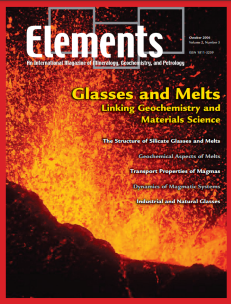
Plates, Plumes, and Paradigms (PPP) is an outgrowth of a Penrose Conference (“Plumes IV: Beyond the Plume Hypothesis,” 2003) held to develop alternatives to the currently dominant mantle plume model to explain the origin of melting anomalies such as Iceland and Hawai’i. The main objective of PPP is cogently stated in the volume’s preface: “The fundamental question is whether plumes exist, and if they do, are they a common phenomenon in the mantle, or are they rare occurrences beneath particular localities?” With 861 pages of data, experiments, hypotheses, critiques, and historical-scientific reviews, PPP makes a powerful anti-plume case, which may be enough to shake the certainty of many who take the hypothesis for granted.
Book Review — Micro- and Mesoporous Mineral Phases
By Elements | August, 2006
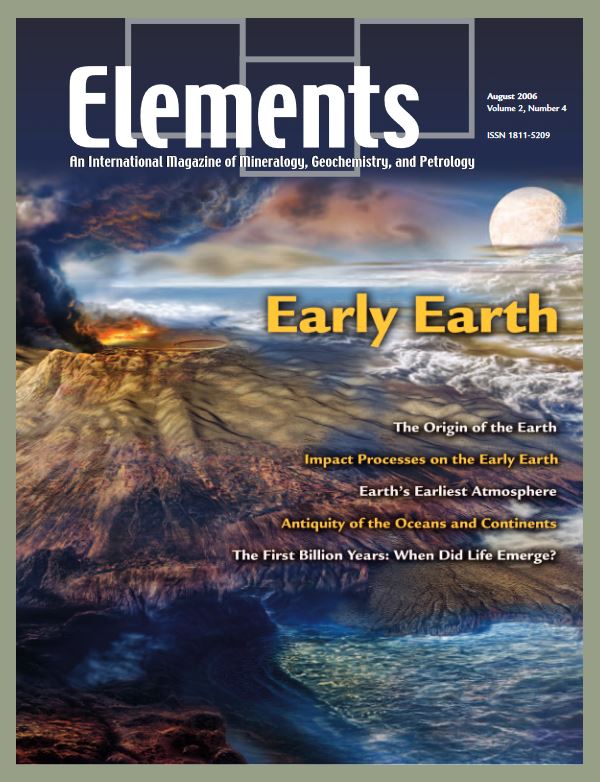
For those working in a lab, one of the “petits plaisirs” enlightening everyday life is when the librarian proclaims “I have just received and shelved a new white book.” You realize immediately that a brand new volume of the prestigious book series Reviews in Mineralogy and Geochemistry (RiMG) has arrived from the States. Needless to say, you break off what you are doing, you open it, and you go through it rapidly, even if the title is far from your current topic of interest. A quick flip through the pages usually suffices to give you a good idea of what and who is in the forefront of the subject.
Book Review — Environmental Geochemistry Treatise on Geochemistry, volume 9
By Elements | June, 2006
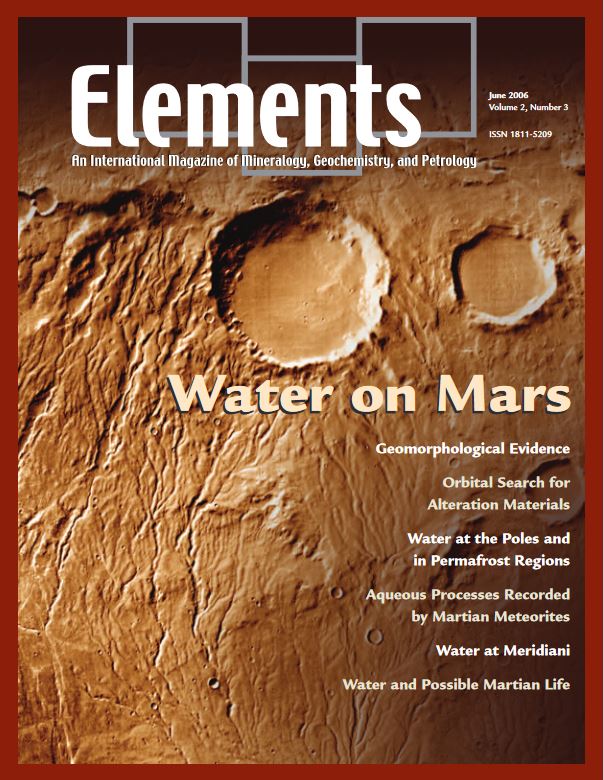
This convenience in packaging would normally carry the price of considerable overlap among chapters, but once again the editors have done a remarkable job of avoiding this pitfall, as far as possible. For example, several of the chapters discuss sorption on mineral surfaces in the context of contaminant fate and transport, but only one (chapter 9.09, “Environmental Geochemistry of Radioactive Contamination”) goes into any depth, addressing the utility of surface complexation models for estimating how distribution coefficients will change under various geochemical conditions.
Book Review — A Color Atlas of Meteorites in Thin Section
By Elements | December, 2005
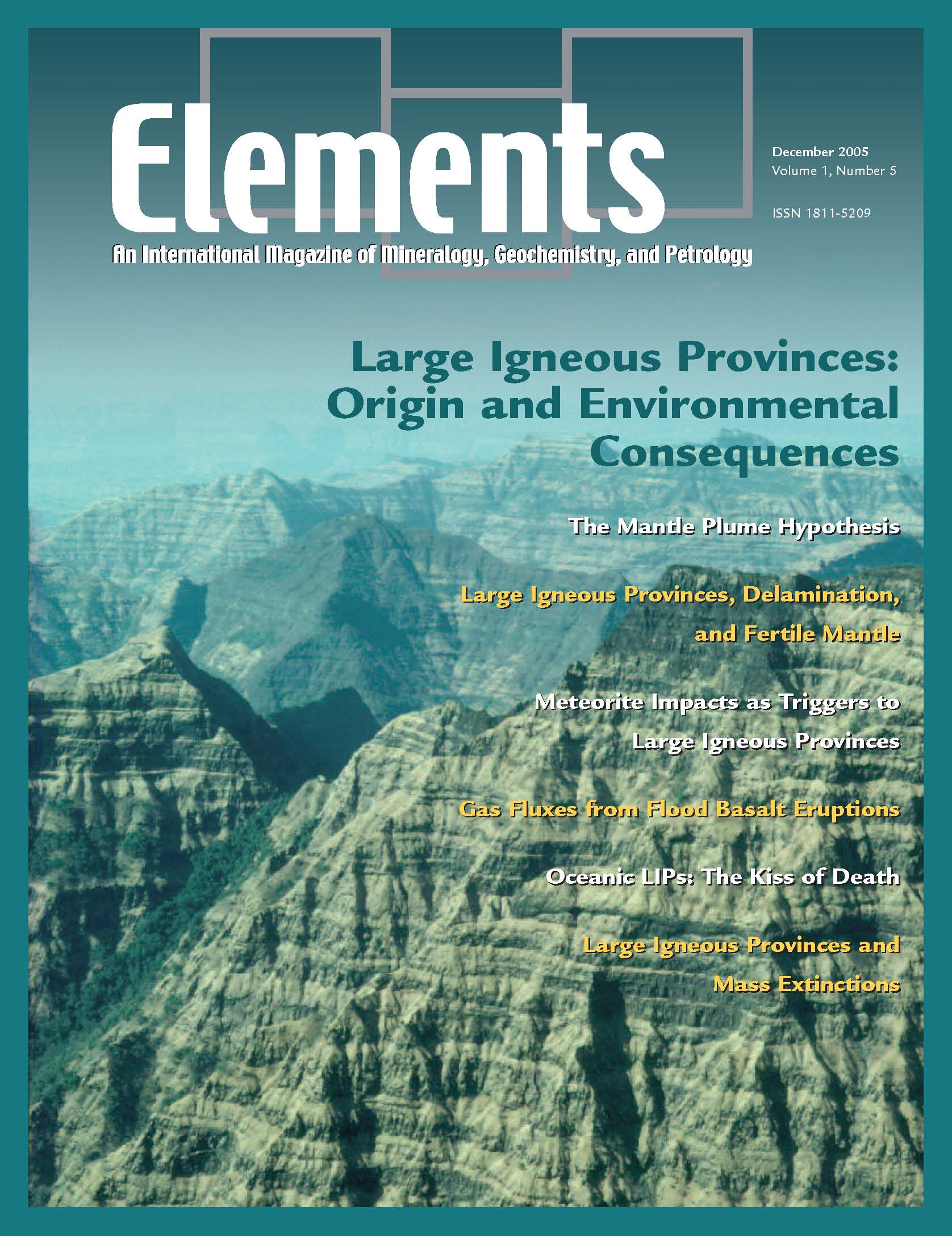
When neophytes first gaze at the colored rectangles in one of Piet Mondrian’s paintings, they may muse that the image is pretty, but puzzle over whether it means anything. The Dutch artist is widely known for formulating the neoplasticism style of painting during World War I, having successively given up on naturalism, impressionism, pointillism, and cubism.
Book Review — Mercury Sources, Measurements, Cycles, and Effects
By Elements | September, 2005
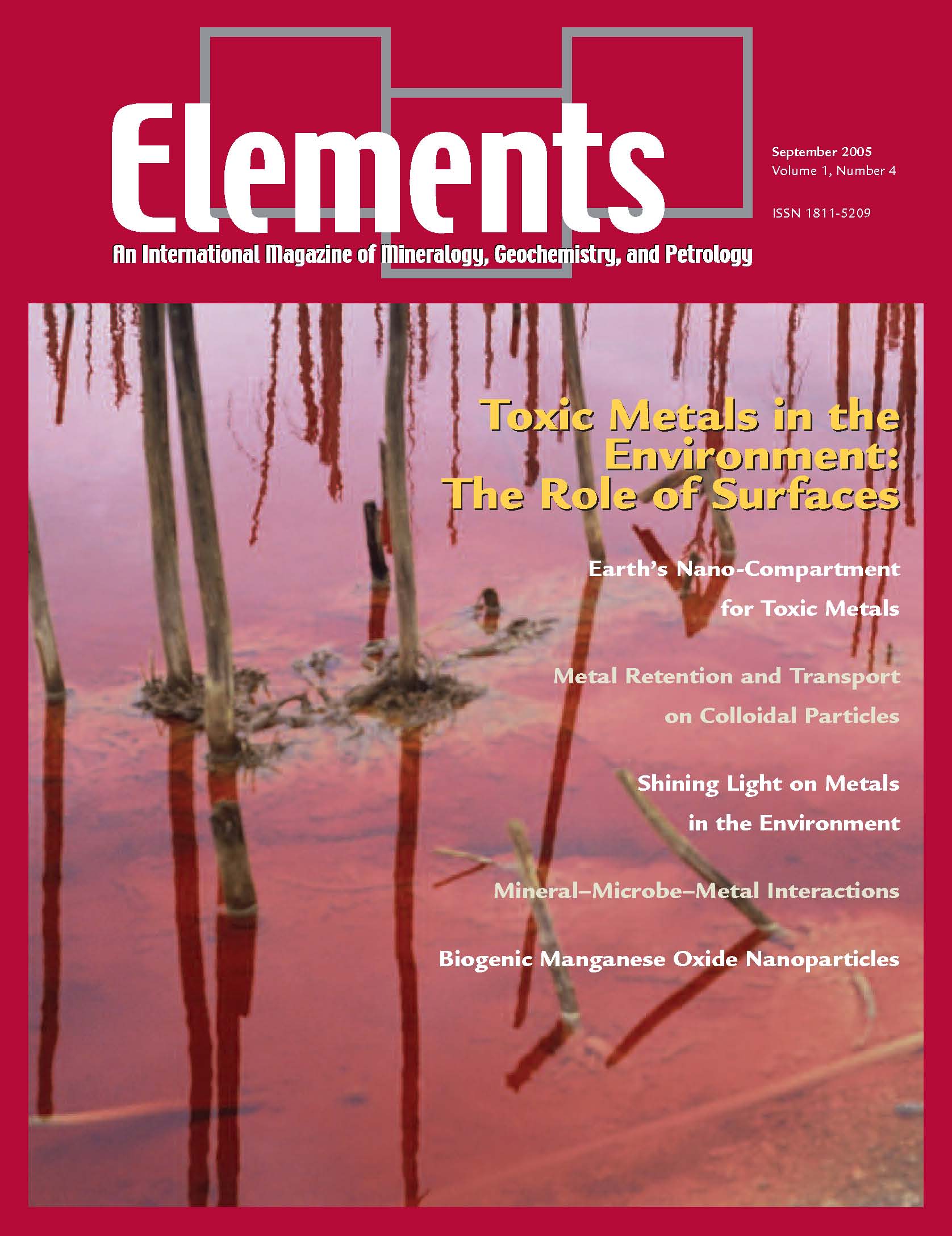
Concern regarding mercury (Hg) as an environmental contaminant has recently come to the forefront of public awareness. Because of this, many involved in Hg research are being increasingly called upon to help understand the sources and sinks for Hg in the environment, the Hg biogeochemical cycle, and the implications for human and ecological health. Mercury: Sources, Measurements, Cycles and Effects, short course volume 34 of the Mineralogical Association of Canada (MAC), presents a collection of papers on this timely topic, of significant interest to those in the geologic, environmental, and other sciences, as well as to environmental managers and policy makers. The goal of this volume is to provide “a discussion of the current state-of knowledge regarding (1) natural and anthropogenic sources of Hg, (2) sampling protocols and analytical methods, (3) transport and transformation of Hg in the environment, and (4) effects on ecosystems and human health.” Most of the chapters provide an up to-date discussion and are excellent reviews.
Book Review — Volcanic Worlds Reviews Exploring the Solar System’s Volcanoes
By Elements | June, 2005
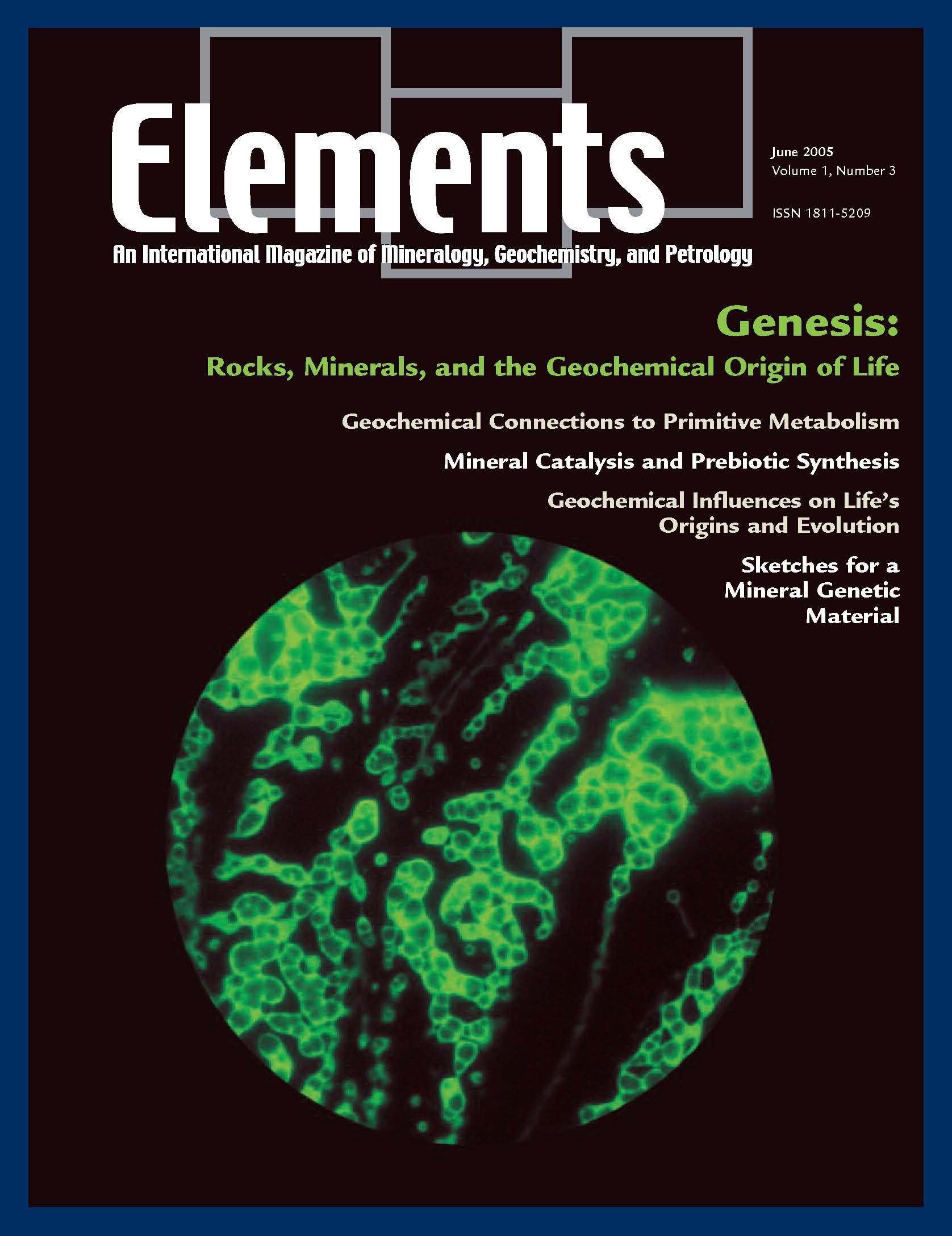
The study of volcanoes throughout the solar system is an exciting subject, in part because of the dynamic nature of volcanoes on Earth and in part because of the wonder in exploring alien worlds only to find variations on a familiar theme. This book goes a long way to demonstrate to the non-specialist reader that studying volcanoes, be they on the Earth’s ocean floor, in the wilds of Earth’s polar regions, or on other planets, is indeed fun. It also shows that understanding the diversity of volcanism provides critical insights into the internal workings of planets.
Book Review — Geochemistry of Non-traditional Stable Isotopes
By Elements | January, 2005
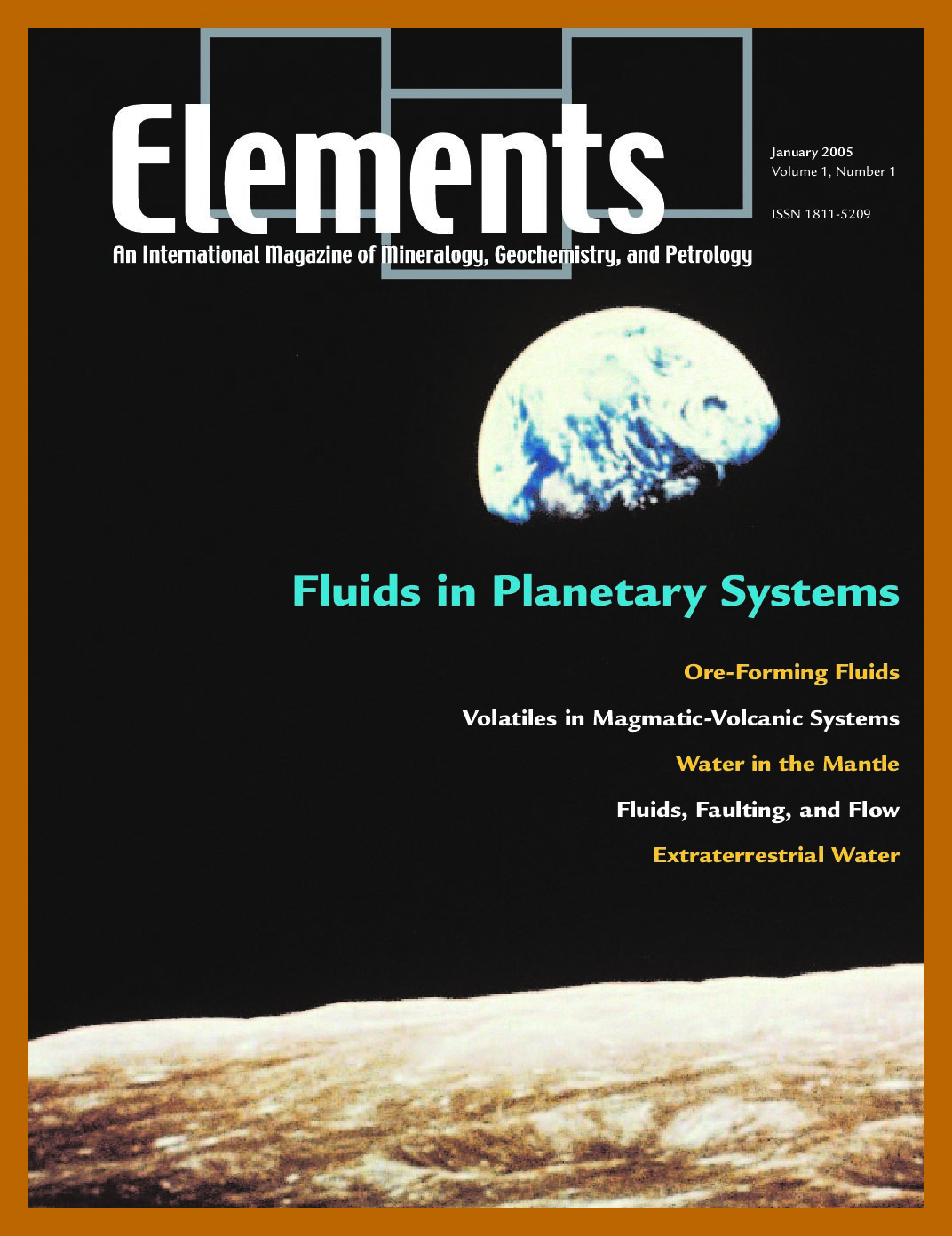
The latest RIMG volume on the geochemistry of non traditional stable isotopes is extremely timely, as was the related MSA short course at Spring AGU 2004 in Montréal. The editors, who were also the organizers of the short course, did an excellent job at choosing the structure of the volume; the order of the chapters is logical and there is a good mix of theory and discussion. This volume is an absolute must for anyone interest ed in these new isotope systematics as well as in geochemistry in general. The geochemistry of the non-traditional stable isotopes represents an important, but very new analytical and scientific field, and the book emphasizes the potential pitfalls. Clearly, as a community, we must be careful in how far we push the interpretation of the results produced to date.
Book Review — Geochemistry of Non-traditional Stable Isotopes
By Elements | January, 2005

The latest RIMG volume on the geochem istry of non traditio nal stable isotopes is extremely timely, as was the related MSA short course at Spring AGU 2004 in Montréal. The editors, who were also the organizers of the short course, did an excellent job at choosing the structure of the volume; the order of the chapters is logical and there is a good mix of theory and discussion. This volume is an absolute must for anyone interest ed in these new isotope systemat ics as well as in geochemistry in general. The geochemistry of the non-traditional stable isotopes represents an important, but very new analytical and scientific field, and the book emphasizes the potential pitfalls. Clearly, as a community, we must be careful in how far we push the interpre tation of the results produced to date.

